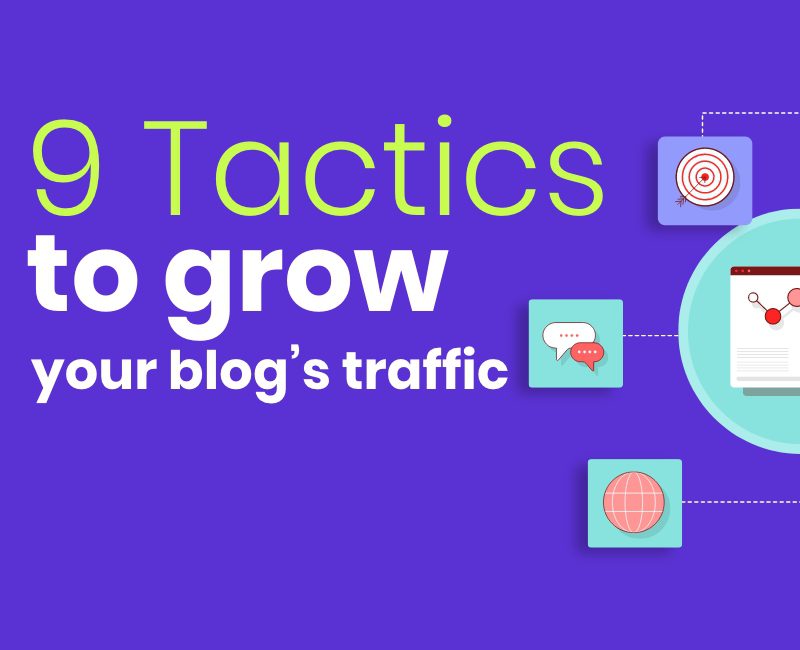Every business owner who has ever tried to attract audience for a blog knows how frustrating it can be. Though we’d all prefer it if readers merely appeared out of nowhere, the fact is that building an audience takes time and effort.
It’s easy to become discouraged and give up on blogging, but once you’ve experienced the benefits, you’ll realize that your blog can have a significant impact on your business by driving traffic to your site, assisting in the development of a social media audience, and making an impression on prospects and clients.
The following are 9 tried-and-true tactics for growing your blog’s audience and traffic.
1.Update your blog more often
According to studies, the more frequently you update your blog, the more visitors it will receive. Google prioritizes websites with new content, so update your blog at least twice a week if you want to get more attention from the search engines.
2.Use social media to spread the word.
Each new blog post should be shared on social media platforms : Twitter, LinkedIn, Facebook, Google+, and Pinterest… Social media sites can become some of your top traffic sources if you spend time cultivating your networks and sharing excellent content.
3.Write better titles.
The titles of your blog posts are almost more important than the content itself. This is because titles help potential readers decide whether or not to click and read more. Take note of the article titles you see on magazine covers. They entice readers with promises and solutions. If you do the same, your readership will grow.
4.Know your target audience.
While you may be interested in aquatic life, exotic spots, football, and weight loss, your readers will be confused if your content doesn’t really follow a consistent topic. Determine your niche audience, what they want to read, and what exact messages you want to share.
5.Add alt text to photos.
According to studies, including photos in blog content boosts readership. A photo does not only make the blog more visually appealing, but it also allows you to add keywords in the Alt Image tag, because Google, Bing and others can’t see images as we do, so you need to add some context (in the form of text) to help them decipher your photos and graphics, which helps search engines better understand, and thus efficiently index, them.
Readers will be able to find your images on Google Image Search if you include these small textual descriptions, which will result in more traffic to your website and, ultimately, better blog SEO.
6.Include keywords.
When it comes to SEO, keywords are crucial. Ensure that every page on your website has a keyword strategy. This is one of the simplest strategies to increase traffic to your website. Choose one key phrase for each blog article you create that you believe readers will use to locate the blog. Next, include that term in the blog’s title, the page’s headline, at least two times in the page’s content, in a prominent picture on the page, and in the page’s link. Keyword density helps Google understand the content of a website, which can lead to increased search engine traffic.
7.Include links.
Include a link to another company’s page when you mention their product or service in a blog post. Not only does Google like outbound links on your site, but the company you mention may see your post and link back to you. Furthermore, readers appreciate it when you provide resources to help them find what they’re looking for.
8.Publish guest posts.
Find other blogs that have a similar audience to yours and offer to contribute guest blog posts. If the site has a large audience, you can bet that readers will want to interact with more of your content.
9.Use videos.
One of the many reasons that videos can drive more traffic to your site is that Google owns YouTube.
Short videos that are both informative and entertaining can be used to supplement the written content on your blog.
You now have some of the tactics you need to grow your blog posts’ traffic. It is important that you do not overlook any of the tips we have just given you in order for your SEO strategy to be successful and your articles to be properly positioned on Google.








